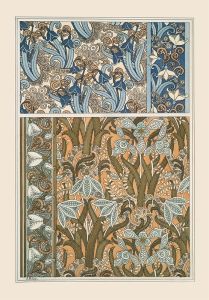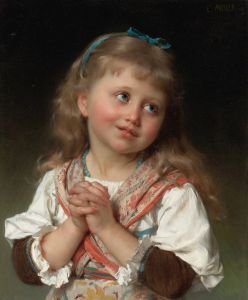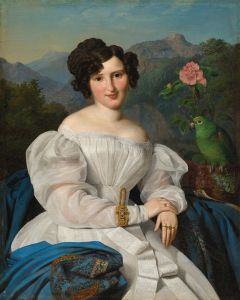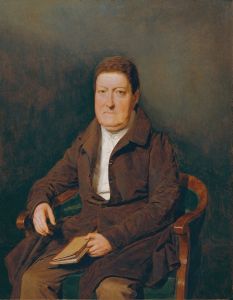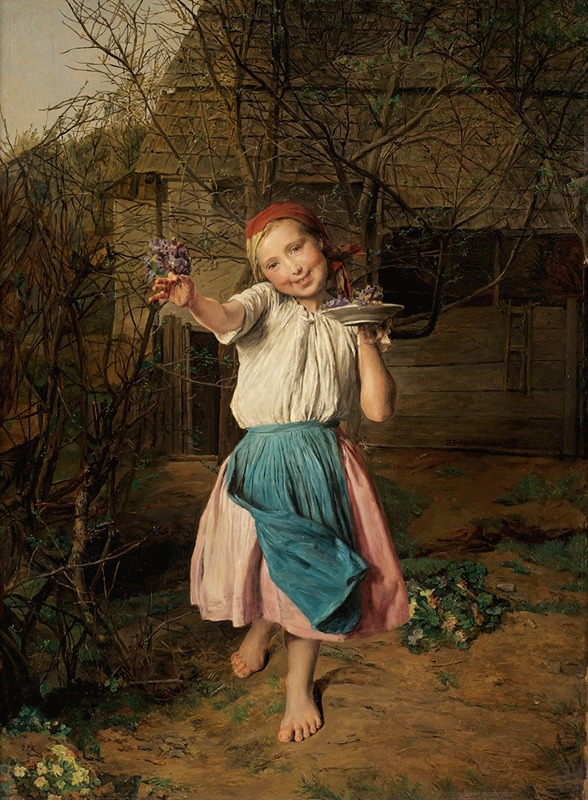
Das Veilchenmädchen
A hand-painted replica of Ferdinand Georg Waldmüller’s masterpiece Das Veilchenmädchen, meticulously crafted by professional artists to capture the true essence of the original. Each piece is created with museum-quality canvas and rare mineral pigments, carefully painted by experienced artists with delicate brushstrokes and rich, layered colors to perfectly recreate the texture of the original artwork. Unlike machine-printed reproductions, this hand-painted version brings the painting to life, infused with the artist’s emotions and skill in every stroke. Whether for personal collection or home decoration, it instantly elevates the artistic atmosphere of any space.
Ferdinand Georg Waldmüller was an Austrian painter known for his contribution to the Biedermeier period, a style that emphasized realism and detail in the early to mid-19th century. Waldmüller was celebrated for his ability to capture the essence of everyday life, nature, and the people of Austria with remarkable precision and clarity. One of his notable works is "Das Veilchenmädchen," which translates to "The Violet Girl."
"Das Veilchenmädchen" is a fine example of Waldmüller's skill in portraiture and his attention to detail. The painting depicts a young girl, often interpreted as a flower seller, holding a bunch of violets. The subject is portrayed with a serene expression, and the composition is marked by its vivid colors and the delicate rendering of textures, particularly in the girl's clothing and the flowers she holds. Waldmüller's use of light and shadow adds depth to the painting, highlighting the girl's features and the vibrant violets.
The painting reflects Waldmüller's interest in capturing the innocence and simplicity of rural life, a common theme in his work. During the Biedermeier period, there was a focus on the domestic and the idyllic, which is evident in "Das Veilchenmädchen." The painting not only showcases Waldmüller's technical prowess but also his ability to convey emotion and narrative through his subjects.
Waldmüller's work, including "Das Veilchenmädchen," is often noted for its photographic realism, a quality that was ahead of its time. His paintings are characterized by their meticulous detail and the lifelike representation of his subjects, which was achieved through careful observation and a masterful command of the medium. This attention to detail is evident in the way he captures the texture of the girl's skin, the folds of her clothing, and the delicate petals of the violets.
Ferdinand Georg Waldmüller was a prominent figure in the Viennese art scene, and his works were highly regarded during his lifetime. He was a professor at the Academy of Fine Arts in Vienna and played a significant role in shaping the artistic landscape of the time. His paintings, including "Das Veilchenmädchen," continue to be celebrated for their beauty and technical excellence.
"Das Veilchenmädchen" is housed in a collection that appreciates Waldmüller's contribution to art history, and it remains a testament to his skill as a painter. The painting is a valuable piece of cultural heritage, reflecting the artistic trends of the 19th century and Waldmüller's unique ability to capture the essence of his subjects.
In summary, "Das Veilchenmädchen" by Ferdinand Georg Waldmüller is a quintessential example of Biedermeier art, showcasing the artist's mastery of realism and his dedication to portraying the beauty of everyday life. Through his meticulous technique and attention to detail, Waldmüller created a work that continues to resonate with audiences, offering a glimpse into the world of 19th-century Austria.








